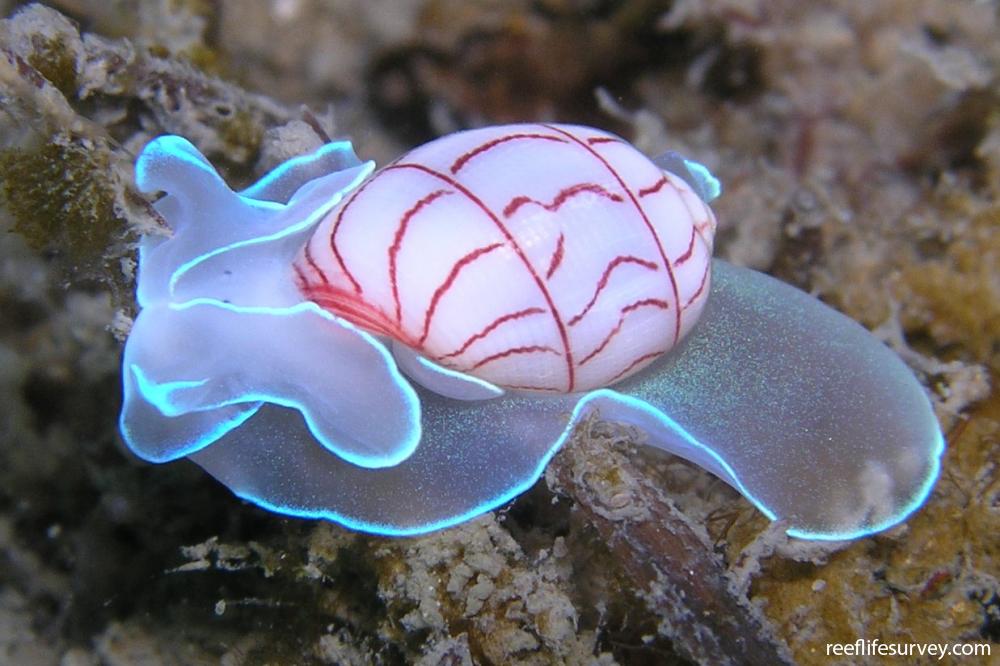Bullina lineata
Red-lined bubble shell | Lined Bubble ShellDistribution
Temperate Australasia, Tropical Indo-Pacific
Description
Solid, spirally grooved shell with a characteristic pattern of pink lines. The appearance of the living animal is also distinctive, as the foot is wide and thin with a light blue margin. Two black eye spots are located on folds that project in front of the shell. It feeds on polychaete worms, which it generally finds on patches of sand on the intertidal rock platform. The species is very sporadic in occurrence; it can be found in moderate abundance in particular rockpools for perhaps a month in summer and then will not be seen again in the area for several years.
Information
Max Size: 2 cm
Sea Temperature Range: 15.6-25.4°C
Depth: N/A
Habitat Generalization Index: N/A
Also referred to as the SGI (Species Generalisation Index), this describes the habitat niche breadth of the species. Species with values less than 15 are found in a relatively narrow range of reef habitat types (specialists), while those over 25 may be found on most hard substrates within their range (generalists). Learn more here.
Conservation and Rarity
IUCN Status: Not Evaluated
Occurrence: Infrequent (3.0% of sites)
Occurrence describes how often the species is found on surveys within its distribution. It is calculated as the % of reef sites surveyed by RLS divers across all the ecoregions in which the species has been observed
Abundance: Solitary (1 per transect)
Abundance is calculated as the average number of individuals recorded per RLS transect, where present.
Edit by: GJ Edgar. 2008. Australian Marine Life. New Holland, Sydney



